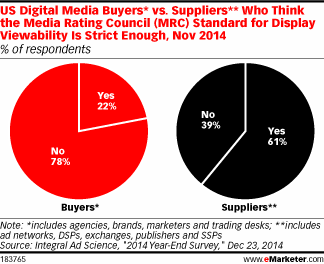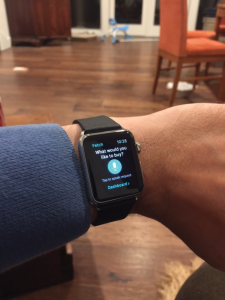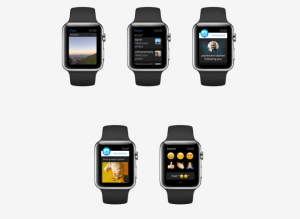 The news has been dominated this week by some pretty ugly headlines and images. People have been distracted, to say the least. I can’t fix that, although I wish I could. But I can help with what’s going on in the business and tech world that you might want to be aware of. Here goes.
The news has been dominated this week by some pretty ugly headlines and images. People have been distracted, to say the least. I can’t fix that, although I wish I could. But I can help with what’s going on in the business and tech world that you might want to be aware of. Here goes.
Industry
Twitter and Google Join Forces To Challenge Facebook Ads
This week Twitter announced a new deal with Google to allow brands that buy ads on Google to also order Promoted Tweets as part of the same buy. It’s what you call your one stop shopping!
Both companies obviously have powerful data resources, and the combination could give advertisers exactly what they’re looking for when it comes to ROI. “Together with Google, we’re making it possible for Twitter advertisers who use DoubleClick to measure when conversions result from views and other actions on Twitter,” according to a Twitter press release. “Later this year, advertisers will be able to use a new attribution model in DoubleClick to get a fuller understanding of how Twitter Ads served on mobile or desktop drive conversions for them across the Web.”
This strategic partnership couldn’t have arrived at a better time for Twitter, which has been struggling to with growth and, more importantly, profitability. I think it’s a smart move.
PayPal Rolls Out One Touch Payments For The Web
PayPal has extended its One Touch payments feature to the Web. You can now make payments using a single log in on any site that accepts PayPal. The service is currently available in the U.S. and will be rolling out internationally over the next few months.
One Touch payments were introduced on Android and iOS last year. Making them available on the Web is a natural progression in making shopping online as seamless as possible.
Digital Video
Video Viewability Standards Have A Lot of Room For Improvement

via eMarketer
U.S. digital video ad spending is poised to increase by 33.8 percent this year and maintain double-digit growth through at least 2019, according to eMarketer. This forecast masks structural problems in the digital video advertising industry, most notably a disagreement between buyers and sellers over current standards for ad viewability—that is, determining whether an ad is within the user’s view when it’s playing. Kind of important, wouldn’t you think?
In November 2014, advertising analytics firm Integral Ad Science polled U.S. digital media buyers and sellers on their impressions of the Media Rating Council’s (MRC’s) viewability standards. Not surprisingly, the survey found a clear majority of buyers didn’t think the standards were adequate, while suppliers were generally okay with them.
According to Moat, Q4 2014 saw worldwide viewability rates for :15 and :30 second video ads hovering around 51 percent (based on a 2-second in-view rate.) That means that roughly 50% of video ads were viewable, according to the MRC’s 2-second benchmark.
Viewability rates increased substantially with ads purchased through programmatic direct channels in the US compared with overall pre-roll video, according to a study from TubeMogul. This is because such inventory is typically targeted at viewers who are predisposed to like specific types of content, such as fantasy sports or skateboarding.
With video becoming more and more important, both to brands and to advertisers, this stuff is important to pay attention to.
Mobile
Compared to Mobile, Desktop’s Share of Retail Site Traffic Declining
According to Adobe, in 2014 the average retail site got 26.6 percent of its U.S. visits from smartphones, and 17.8 percent from tablets, meaning desktop shopping made up more than half of all consumer site visits. The desktop still accounts for a majority of sales—72 percent in Q1 2015, according to Branding Brand—but visits from mobile continue to rise.
Branding Brand reported that in Q1 2015, search was the biggest driver of smartphone traffic to retailers, with 43 percent of all smartphone visits in the U.S. coming directly from search. Around a quarter of smartphone visits were direct, and 16 percent were triggered by emails.
Branding Brand also reported that iPhones accounted for 58 percent of all smartphone traffic, while, at 69 percent of the visits, iPads ruled the tablets.
Most Sports Fans Slow to Jump on Mobile
The hockey playoffs are on, baseball’s back, and sports fans love their TVs! In a January 2015 study by the Consumer Electronics Association, 90 percent of American adult sports fans said they had accessed sports content on a TV in the past year, mostly preferring to watch live.
While a decent 40 percent of respondents had checked out sports digitally, just 16 percent had consumed content through a mobile device in the past 12 months. Only 12 percent streamed video via smartphone, and nine percent through a tablet.
Are sports fans the pavement of content consumers? eMarketer estimates 78.6 percent of U.S. internet users—or 204.2 million people—will be digital video viewers by the end of 2015. Meanwhile, 63.3 percent of tablet users and 55.5 percent of smartphone users will watch streaming or downloaded video content via such devices (browser or app) at least monthly. While the trend may be slower to catch on among sports fans, where really, you want to feel like you’re in the stadium or arena versus watching on a tiny mobile screen, there’s no denying that digital video consumption, via any device, is the norm.
Wearable Technology
What Are Consumers Looking For From Wearables?
According to a February 2015 research report by ACCENT Marketing Services, watches are not what most consumers are looking for when it comes to wearables. Only around a quarter of Internet users said they were most excited about watches, compared with 44 percent who were interested in an activity tracker or fitness band. Another eight percent wanted activity or fitness clips, as opposed to bands.
In a question specifically about the Apple Watch, ACCENT found that only 19 percent of respondents planned to buy one. Men were more likely to say so than women, at 25 percent vs. 13 percent, respectively, and baby boomers were the most likely age group to plan such a purchase, at 20 percent.
According to January 2015 polling by the Interactive Advertising Bureau, 29 percent of marketers rated wearables a four on a scale from one to four in terms of marketing opportunity.
What those opportunities will be—just like what the most popular use cases of the Apple Watch will be—remain unclear. John Hoholik, chief engagement and solutions officer at ACCENT, told eMarketer, “People will start to engage as much as the technology allows them to engage, and I don’t know that marketers and brands have really thought that through yet. I think it will evolve much as social has evolved. It will grow and change, and what consumers need will dictate the different ways marketers behave on these new platforms.”
Fetch Lets You Buy Anything From Your Apple Watch

via TechCrunch
Mobile shopping assistant Fetch is tackling a new platform with the release of its Apple Watch app. Now more of a mobile “concierge,” Fetch will allow Watch owners to order any product or on-demand service, and even make travel reservations, right from their wrists. Essentially, it’s the combination of a personal shopper, virtual assistant, and travel agent, all rolled into one, explains Fetch CEO Tom Hadfield.
Using the app is simple enough. After installing it to your Apple Watch, you just tap the microphone icon and tell it what you need. This request is then picked up by one of Fetch’s 58 concierges, people trained and specialized in areas like travel, wine, shoes and more.
“We believe the future is ‘AI plus human,’” notes Hadfield. Fetch’s app returns the results of the requests to mobile users, offering them a quick way to complete the task at hand.
In addition, though the service is free to use for the time being, the company plans to implement a premium subscription offering starting next month. The pricing for this tier is still yet to be determined, but it will include faster response times and more personalized service.
Social Networks

via TNW
Secret, the anonymous sharing app turned anonymous chat app, is soon to go the way of the DoDo. Despite its pivot at the end of last year, the service announced that it is closing its virtual doors.
“Unfortunately, Secret does not represent the vision I had when starting the company, so I believe it’s the right decision for myself, our investors and our team,” the company’s founder David Byttow said in a post on Medium. Most of what I saw or read about Secret was that it was mostly a place where people shared mean or nasty things, anonymously, about others. Who needs that?
Facebook Is Dominating Social Logins
According to recent data from Gigya, Facebook expanded its share of social logins worldwide during Q1 2015, when it accounted for 63 percent of the total. Google+ was the only other social network that “has maintained a sizeable share of logins,” though this “sizeable” proportion was just 21 percent in the first quarter of this year. Notably, Twitter passed Yahoo in share, at six percent vs. five. Gigya noted that Yahoo “has all but disappeared as an identity provider.” LinkedIn accounted for 2 percent of the total.
Social login usage was highest among users ages 18 to 24 and 25 to 34, 30 and 28 percent, respectively. Share dropped to 21 percent for both the 35-to-49 and 50-and-older brackets. However, a pattern had emerged over the past several quarters that indicated social login adoption was rising slightly among older users as the younger two groups lost share.
While the desktop remains the device of choice for social logins, according to LoginRadius, accounting for 57 percent vs. 43 percent for mobile, an obvious shift in usage has occurred over the past two years. And Facebook had an even stronger hold on mobile devices, representing nearly three-quarters of social network IDs used by users globally to sign in to other sites via smartphones and tablets.
Instagram Comes to the Apple Watch

via Venture Beat
Instagram, never one to be seen as a wallflower, talked up its new Apple Watch app in a recent blog post, saying it was:
Designed to make Instagram even more intimate and in the moment. Whether you are out on a morning walk or enjoying a cup of coffee with friends, with a quick glance you can see the world as it happens and interact with the photos that matter to you. We’ve tailored your feed, activity and notifications for the Watch interface so they feel intuitive and simple to use.
Users of the app can see the most recent posts from accounts in their feed, and can swipe up or down to view or like pictures. They can also monitor activity on their own posts — comments or likes — and see profiles. Users can also receive “rich notifications” when family, friends, or favorite accounts posts content to Instagram.
Is the Fortune 500 Meeting Google’s Mobile Standards?
Will Google’s mobile algorithm changes hurt Fortune 500 websites’ search results ranking? A study by Merkle|RKG found that nearly half of Fortune 500 websites were not mobile-friendly according to Google’s latest algorithm changes. Internet Top 500 retail websites were in a far better position, likely due to demand from digital consumers for mobile-optimized sites over the past few years. Even Fortune 500 companies that did have Google-approved mobile sites weren’t necessarily following Google’s recommendation to use responsive design; 70 percent were using m. or distinct mobile URLs.
Google’s new algorithm will likely force Fortune 500 sites to finally get on the mobile optimization train; otherwise, their lack of mobile-friendly requirements will negatively affect their rank in results, RKG noted. It is important to note while we’re discussing this that Google’s new algorithm affects only mobile search results, and are on a page-by-page basis. So a poor ranking in mobile because of lack of an optimized website won’t impact search results other than on mobile devices. But when you consider that “mobile” means both smartphones and tablets, and there are many who use tablets for search, it seems important to me to get your mobile act in gear.
For the first time next year, eMarketer estimates, the majority of U.S. consumers will conduct a search on a mobile phone at least once per month, with that figure coming in at 49 percent this year. By 2019, 65 percent of the American population will be mobile phone search users, representing nearly eight in 10 mobile phone users.
Twitter Needs to Move Toward Curated Feeds According to Ev Williams

via Inc
Twitter co-founder Evan Williams is all in favor of the idea of transforming the social media’s real-time stream into a curated feed, he says. He was on stage Tuesday at Bloomberg Businessweek Design 2015 in San Francisco.
“If you think of Twitter today versus when we started it seven years ago … it’s clear that there’s too much data. There’s too much information, and we should help people,” he said, adding that the company has a “tremendous amount of power” to do that.
“And so to ignore the power of computers and the intelligence of the network to help you see the right tweets at the right time would be silly — just to be married to a particular experience that people have had,” Williams said. “That’s not easy to do with a system at Twitter’s scale, but I think it’s absolutely necessary.” Interesting. I’m not sure that this makes Twitter better – or worse – but it’ll be something to watch.
Miscellaneous

